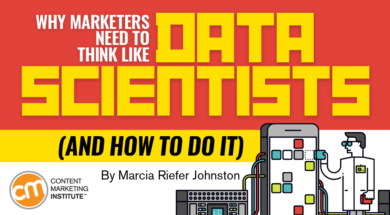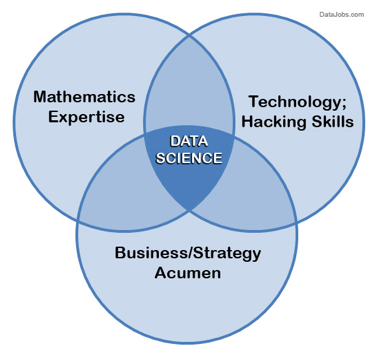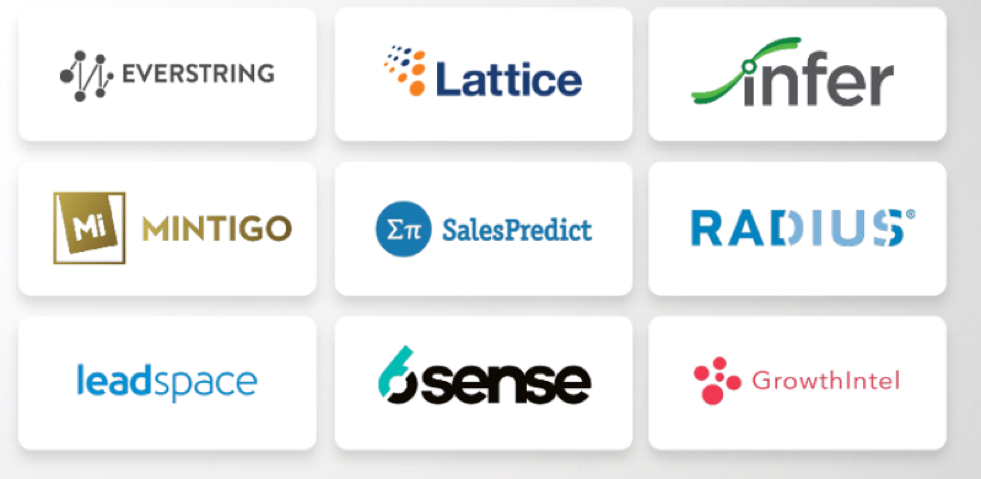 Your company may not employ data scientists today. And you might be fine with that. Consider, though, that if you’re not working with a data scientist or at least thinking like one, you’re missing something: the ability to say “I know” instead of merely “I think.”
Your company may not employ data scientists today. And you might be fine with that. Consider, though, that if you’re not working with a data scientist or at least thinking like one, you’re missing something: the ability to say “I know” instead of merely “I think.”
That distinction matters when you’re talking with executives, says content marketer and consultant Katrina Neal. “If you walk into a meeting in a next-generation data-driven organization and announce, ‘I think this campaign is going to work,’ you could risk being humiliated in front of your colleagues and asked to leave the room.”
A marketer who says “I think” in front of data-driven execs may be asked to leave, says @Katrina_Neal. Click To Tweet
On the other hand, if you walk in with what you know, people listen. They might even approve your budget.
Katrina spoke on the importance of data science and why data scientists need to be marketers’ new best friends at Intelligent Content Conference (see that talk here) and Content Marketing World (see that talk here). This post summarizes her main points. All images come from her slides.
Why does data science matter in content marketing?
I like this straightforward definition of data science: the practice of “surfacing hidden insight” using data in a way that helps “enable companies to make smarter business decisions.”
Smarter business decisions come from better predictions. As a marketer, when you think like a data scientist, you make predictions that keep shareholders happier, you make customers happier, and you increase respect for your profession. Your content teams make better decisions, you build support for the content initiatives you propose, and your company gets more value from its content.
As NewsCred’s Neil Barlow says, predictability is “how the world’s largest brands continuously delight Wall Street investors and increase stock prices. Within many businesses, CMOs are under particular scrutiny to transform marketing from a cost center to a predictable profit center.”
When you work with (or work like) a data scientist, you build predictive models that enable you to say “I know” instead of “I think” – an important part of transforming marketing into a profit center.
Marketers: Talk like a data scientist, and people listen, says @katrina_neal. #intelcontent Click To Tweet
What is a data scientist, anyhow?
A data scientist is someone skilled in math, tech, and business, as shown in this diagram:

Data scientists care about three types of analytics:
- Descriptive
- Predictive
- Prescriptive
What are marketers doing with these types of data today?
Most marketers collect descriptive analytics. This data, gleaned from a tool like Google Analytics, gives a sense of what has happened – the historical results such as cost per link, click-through rates, and so on. Looking at this kind of data is a bit like looking in the rear-view mirror of your car.
Few marketers use predictive analytics. This data enables people to predict the most likely outcome based on historical and real-time data. For example, using predictive lead scoring can give your hard-earned marketing-qualified leads (MQLs) the best start with your sales teams. It’s a bit like using a navigation app that predicts your car’s arrival time, updating the prediction on the fly as circumstances change.

Prescriptive analytics kick things up a notch, beyond where most marketers are today. This kind of analytics tells you not only what’s likely to happen but what you should do to capitalize on what’s likely to happen. It’s a bit like an autonomous driving car that not only predicts your arrival time but also drives you to your destination.
Prescriptive analytics kick things up a notch, beyond where most marketers are. @Katrina_Neal #intelcontent Click To Tweet
Katrina points to the example of a simulated interaction between a marketing professional and IBM’s artificial-intelligence agent Watson. The marketer asks Watson to set up some social media ads. After setting up the ads and collecting data for a few weeks, Watson recommends replacing an image that has a low click-through rate “based on the performance of similar images for this category in other channels.”
That’s some serious prescriptive analytics: A machine crunches a bunch of data, draws conclusions from it, and says (in a distinctively human-sounding voice), “Here’s what you might want to do next.”
Peek into that conversation between Watson and the marketer. While this kind of conversation may seem like science fiction, it’s becoming increasingly feasible.
How can data scientists help you?
Data scientists (or a data-science mindset) can help you plan your content, refine the content you create, and measure your results by building predictive models using a number of techniques and statistical models.
Planning your content
Data scientists can build predictive models to make content marketing more effective. Here are some common things these models predict:
- Total addressable market (TAM)
- Segmentation and account selection
- Demand generation
- Lead scoring
Refining the content you create
Whether you’re working with a data scientist or cultivating your own inner data scientist, Katrina emphasizes the importance of testing. Scientists in any field start with a hypothesis and then test against it to see what they can learn.
You might do A/B testing, serial testing, or whatever kind of testing gives you the feedback to determine what’s working and how well.
For example, LinkedIn conducted A/B testing on sponsored content – native advertising in the feed – to determine which word performed better, “guide” or “e-book.” The post that used “guide” had a 95% higher click-through rate. In a similar test, “register” outperformed “join” by 165%.
Imagine having quantifiable certainty that one word performs better than another to help optimize your demand-generation engine. Even data that simple could make a difference in your content’s performance. Here’s how Katrina puts it:
Think about your demand-generation funnel. If you can tweak the percentages at each stage of your funnel, you can have a huge impact on the number of leads you bring to the bottom.
Test and learn. Test and learn. That’s what a data scientist does, and that’s what you must do, too, to make content-related decisions that you can defend with confidence and credibility. Katrina’s advice is to do your homework: “Don’t rely on generic content best practices. You need original thinking and a test-and-learn culture to find your own unique blueprint that works for you.”
Test and learn. That’s what you must do to make defendable #content decisions, says @Katrina_Neal. Click To Tweet
For an inspiring, informative, and relevant story, see this GrowthHackers post: The Growth Initiative That Cut Our Customer Acquisition Cost in Half. It gives insight into the way a data scientist might work with a marketing team, showing what’s possible when marketers commit to making business decisions based on what they know instead of what they think.
Measuring your results
To prove that the content you produce helps generate revenue, work with a data scientist to build an algorithmic multi-touch content-attribution model. This kind of model shows which content was read along the customer journey and which pieces of content, or combination of pieces of content, were the most effective for an audience.
That’s the language of numbers, the language that your CEO and other executives understand. As Katrina explains:
When you show up to a board meeting, take a marketing-sourced revenue goal, maybe 20% or 10% of the overall revenue goal. Then walk into future meetings and talk about pacing. How am I pacing against that revenue goal? How many marketing-qualified leads have I got? How many sales-qualified leads have I got? How many bookings have I got? And map that success into a multi-touch content-attribution model. That’s the kind of conversation we need to be accountable for to get a grown-up seat at the table.
JavaScript enables the “magic” responsible for tracking those online touchpoints. HubSpot, LinkedIn, SlideShare, and Facebook, among others, use JavaScript tracking code to enable you to follow people “from your content through to your website.”
Here’s how Pawan Deshpande describes the reason that marketing attribution is integral to the success of content marketing:
The vast majority of touchpoints (instances where potential customers interact with your brand) happen online. They occur when someone reads your blog post, e-book, or infographic, or watches your video. Marketing attribution models enable content marketers to more accurately understand how their content is influencing buyers, and to get full credit for their work.
#Marketing attribution models enable content marketers to get full credit for their work. @tweetsfrompawan Click To Tweet
Katrina referenced Bizible as leading with great educational content related to attribution models, such as this linear multi-touch attribution model:
A data scientist could help build an algorithmic multi-touch attribution model specific to your organization. While at Cisco, for example, Katrina worked with a metrics dashboard based on insights gleaned from the Cisco data-scientist team through a Bayesian network analysis. The team used website data to predict which activities or pieces of content would result in a sales-qualified lead (SQL).
How to get started
If you don’t have the data-science expertise you need, here are some ways to get started:
- Understand what numbers matter to your C-suite.
- Choose ways to measure your content performance.
- Hire a data scientist or explore a predictive-modeling SaaS platform.
Understand what numbers matter to your C-suite
We all know that the language of business is the language of numbers. We know that executives’ hearts melt at those three little words: return on investment. Yet for many content marketers, it’s tough to bring data into the conversation in an effective way.
For starters, Katrina suggests marketers get comfy with these terms: ROMI and CLTV.
ROMI (return on marketing investment) is distinct from ROI, which technically applies only when a business asset is sold. See this online ROMI calculator. Talk in terms of ROMI any time you have costs and sales that you can tie directly to a marketing campaign. Katrina gives this formula:
ROMI = incremental net profit (additional income minus additional costs) ÷ cost of campaign x 100%
CLTV (customer lifetime value) indicates how much a client or customer is worth to your company over his or her life. This number indicates the maximum amount your company should invest in acquiring each customer. Katrina shares this formula:
CLTV = average revenue per user x lifetime x gross margin (the ratio of total revenue to cost of goods sold – cost of providing services)
To come up with ROMI, CLTV, and similar numbers, engage a data scientist or calculate them for yourself. “It can get complicated,” Katrina says. “What I want to embed is a mindset change. We can all go into our jobs with a mindset of being accountable.”
Choose ways to measure your content performance
When it comes to measuring content performance, Katrina proposes that marketers strive to create a multi-touch algorithmic attribution model as discussed above. And she assures you that this kind of model is within your reach even though it’s not easy to decide which content-related numbers to track.
She also touches on UTM parameters, which are components (codes or tags) you build into a URL that appear in a long string after a question mark. UTM parameters enable you to track user behavior. They give you a way to see how many visitors come to one page from another page – be it one of your own pages or a page on a third-party site you’ve provided the link for. When your link is clicked, the parameters are sent to Google Analytics.
![]()
In devising your metrics, the main thing to consider is what you’ll want to do with the results.
Hire a data scientist or explore a predictive-modeling SaaS platform
If you can hire a data scientist, do so. If you can’t, explore a SaaS platform that supports predictive modeling. These platforms act as a data scientist in a box – data science as a service.
Here are some of the companies in this space:
Conclusion
Fellow CMWorld presenter Alicianne Rand essentially summed up Katrina’s main message when she said in her own talk (How the Estée Lauder Companies Drive Sales Through Content Marketing), “All the best modern marketers I know know how to look at data. They don’t need to be data scientists but they know how to ask the right questions.”
All the best marketers don’t need to be data scientists, but know how to ask right questions. @aliciannerand Click To Tweet
As Katrina says, “The best bit is that any of us can think more like a data scientist.”
In what ways do you think like a data scientist? Let us know in a comment.
Here’s an excerpt from Katrina’s talk:
Learn to think more like a data science – or at least improve your content strategy – at Intelligent Content Conference March 20-22 in Las Vegas. Register today.
Cover image by Joseph Kalinowski/Content Marketing Institute
